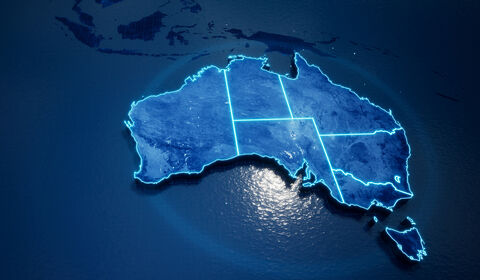Broadly speaking, the insurance industry is arguably only in the early stages when it comes to insurtech evolution. While there has been some significant innovation across the underwriting space, the claims arena has traditionally been much slower to move and slow to embrace digital transformation. That’s not a criticism. In fact, in my mind, this presents opportunities and I believe the best is yet to come!
The global insurtech marketplace is reported to be valued at between three and a half to four billion US dollars, so there’s no denying that investing in innovation is taking off. Over the next decade, we are likely to see some of the biggest leaps yet and so I’m very optimistic about the future in terms of what Crawford is going to be able to offer our clients here in Australia.
In the US, Crawford is part of the gig economy thanks to our WeGoLook product, which has a network of 45,000 people doing what we call ‘on-demand’ inspections. US clients love this product because it effectively means Crawford is within 17kms of an inspection site at all times and we can therefore get resources to site really really quickly, take pictures, gather data etc. In many instances those high volume, lower value, property claims can then be adjusted from the desk. Australia is a much smaller market and population when compared with the US and so whether something like that could work here is questionable, but we only need to look to the US to see some of the innovations coming down the line. Globally, Crawford is unquestionably at the forefront of innovation in the claims management space.
As a global business, the Crawford approach has been to focus on digital that simplifies. We are not interested in implementing new technology for the sake of it. If it doesn't simplify our process and make things smarter, quicker and easier - either internally for our people or externally for our customers - then what’s the point? Digital must simplify to be valuable. And, at the same time, Crawford is focused on human talent to make sure we have the best people with expertise that's deep and eminent. I believe, those two things together - the digital plus the people - is what will set the benchmark in our space going forward.
There’s no doubt that within the insurance claims cycle, the claims process is ripe for transformation. From ‘first notification of loss’ all the way through to the claim settlement, there's a huge amount of opportunity to automate certain parts of the process. However, we must remember that as we do this, we have to consider the policyholder first. We must make sure that we automate areas that will help improve the process and enhance the customer experience. One example of automation that has the potential to do this (which we are starting to do more of here at Crawford Australia) is around automated real-time communications. This is an opportunity for policyholders to get updates on their individual claim in real time and it takes the guesswork (and often the frustration) out of it, which ultimately leads to better outcomes through increased transparency and higher net promoter scores for insurers (our clients).
The other thing I see unfolding more and more, is smart triage of claims – this could be a game changer. When you think about the claims lifecycle, there are many inputs and outputs along the way and there is a lot of information to take in for the humans working on the claim. They have to make the right decisions at the right time, and so we must be alive to decision fatigue. But when we automate some of that process, it can actually remove decisions, and give the claims assessor information about the optimal path for a particular claim at an early point, and expediate the claims process. This technology already exists today where it can take the components or the facts of an individual claim and then route it to either a field adjuster or maybe the managed repair network. There are all these different options, but by having automated smart triage in place, it can really help to push the claim through the optimal path.
When we talk about innovation at Crawford, it is critical to point out that it is not only about tech. Within our business, innovation is also about empowering our market leading people to constantly challenge themselves and come up with clever ideas and new solutions to clients’ evolving challenges.
Last year we had a client come to us frustrated that its high value residential claims were taking too long to conclude, and costs were blowing out. What Crawford’s people did was to develop an entirely new claims journey for claims over $100k in value. By implementing our fully connected ‘One Crawford’ approach – in this particular case, bringing together various parts of our business including Specialty Loss Adjusting, CRD Building Consultants & Engineers, and Contractor Connection, we eliminated our client’s problems and have totally transformed these types of claims. After just a few months, the client’s satisfaction scores with its policyholders improved dramatically.
Our end-to-end claim lifecycle offering continues to be unrivalled by our competitors. Literally, no other claims management business in Australia does it like Crawford. When you’re a Crawford client, you only need to deal with one supplier for the life of a claim. Through client feedback, we have heard that managing multiple suppliers as things move through the claims process can be a logistical challenge, requiring more internal resources on their part, and it can incur additional cost as the claim is passed from one supplier to the next (i.e. loss adjuster, to builder, to lawyer) all getting up to speed on the details. The Crawford experience is seamless because there’s no disconnect and no handoffs; made possible because we have digitally connected systems and all the experts under one roof.
In terms of tech here in Australia, there’s a whole host of new technologies we are currently implementing or getting ready to implement that will turn Australian claims management on its head. We are reviewing ‘Digital Desk’, which is a Crawford created triage and communication system that has delivered great outcomes in other parts of the world. In pockets of our business, we are also trialling a smart online platform, accessible to the policyholder via a smartphone app; it transforms photos into a complete property data package that includes interactive 3D models with accurate roof and elevation measurements. This drastically speeds-up the process of having necessary repairs carried out to an insured’s property.
Asservio is another great example. This is Crawford’s estimate review technology which ensures faster more accurate property repair quotes or estimates. This is currently in widespread operation across Crawford in the US and we are evaluating it for use in Australia.
While there’s an intense focus on insurance innovation currently, we must not lose sight of the holistic picture. At the end of the day, claims are about people. When we think about insurtech and innovation, the really critical thing for us at Crawford is creating the right balance between the interaction and use of technology, alongside how that technology can help to amplify the human components that are so critical in claims management. We cannot forget about the human component, and we must continue to put just as much focus on empathy. When an individual is filing a claim, it is often very emotional because there may have been property damage for example. In order to navigate a policyholder through that claims journey, we must show empathy and it’s for that reason that it is not sensible to automate every single component of the claims process. While we are actively looking at and testing AI globally and understanding how it can improve our service offering, I don’t believe a piece of tech can be empathetic and so all of the technology we implement has to be tested through the lens of people.
I sit on the Australian Executive Committee and can vouch that Crawford Australia is 100% committed to continuing to invest in training and upskilling of new talent. Technology is arguably most relevant in the high-volume low complexity claim space, but even in that regard, with an aging Australian population, we need to be mindful of the customer and how certain demographics interact with technology. In the SME and complex claim space, we have to make sure we have the right experienced people and they are empowered by the technology.
It’s easy for people to be fearful that technology is going to take their job, but I don’t foresee that. There will always be a place for excellent people. Will the way we work and do things evolve? Absolutely. Will jobs look a little different in the future? That’s fair to say. But will tech in the insurance industry largely eliminate people? Not a chance.



